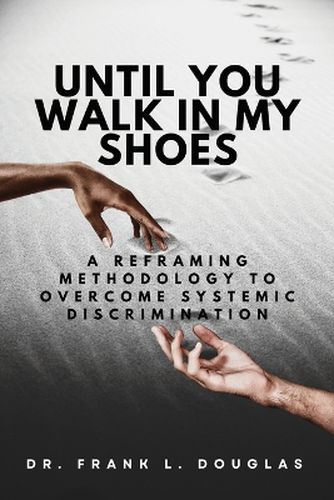Readings Newsletter
Become a Readings Member to make your shopping experience even easier.
Sign in or sign up for free!
You’re not far away from qualifying for FREE standard shipping within Australia
You’ve qualified for FREE standard shipping within Australia
The cart is loading…






This title is printed to order. This book may have been self-published. If so, we cannot guarantee the quality of the content. In the main most books will have gone through the editing process however some may not. We therefore suggest that you be aware of this before ordering this book. If in doubt check either the author or publisher’s details as we are unable to accept any returns unless they are faulty. Please contact us if you have any questions.
UNTIL YOU WALK IN MY SHOES: A Reframing Methodology to Overcome Systemic Discrimination, has two sections. The first section describes the Framework and Process of the Reframing Methodology, and the second section consists of 18 cases in which the Reframing Methodology is implemented. The Framework describes the role of Equity and Inclusion in establishing psychologically safe or unsafe cultures in organizations, and introduces the Equity-Inclusion Culture Matrix. Equity, Inclusion, and Individual Engagement (EIIE) is introduced as a natural evolution of Diversity, Equity, and Inclusion (DEI). The Reframing Process is described and the steps needed to Reframe the Problem being experienced by the aggrieved individual are described. These steps include ensuring clarity of the Desired Outcome, walking in the shoes of the aggrieved, and finding a Better Problem to Solve to achieve the Desired Outcome..
In the second section each of the 18 cases is described and analyzed with the aid of the Equity-Inclusion Culture Matrix. These cases include employees from healthcare - physicians and nurses, employees from government agencies, as well as from large corporations and academic institutions..
These cases are significant because they highlight several important issues. These include the role Equity and Inclusion play in healthcare disparities, employee well-being and health, and productivity in organizations.
$9.00 standard shipping within Australia
FREE standard shipping within Australia for orders over $100.00
Express & International shipping calculated at checkout
This title is printed to order. This book may have been self-published. If so, we cannot guarantee the quality of the content. In the main most books will have gone through the editing process however some may not. We therefore suggest that you be aware of this before ordering this book. If in doubt check either the author or publisher’s details as we are unable to accept any returns unless they are faulty. Please contact us if you have any questions.
UNTIL YOU WALK IN MY SHOES: A Reframing Methodology to Overcome Systemic Discrimination, has two sections. The first section describes the Framework and Process of the Reframing Methodology, and the second section consists of 18 cases in which the Reframing Methodology is implemented. The Framework describes the role of Equity and Inclusion in establishing psychologically safe or unsafe cultures in organizations, and introduces the Equity-Inclusion Culture Matrix. Equity, Inclusion, and Individual Engagement (EIIE) is introduced as a natural evolution of Diversity, Equity, and Inclusion (DEI). The Reframing Process is described and the steps needed to Reframe the Problem being experienced by the aggrieved individual are described. These steps include ensuring clarity of the Desired Outcome, walking in the shoes of the aggrieved, and finding a Better Problem to Solve to achieve the Desired Outcome..
In the second section each of the 18 cases is described and analyzed with the aid of the Equity-Inclusion Culture Matrix. These cases include employees from healthcare - physicians and nurses, employees from government agencies, as well as from large corporations and academic institutions..
These cases are significant because they highlight several important issues. These include the role Equity and Inclusion play in healthcare disparities, employee well-being and health, and productivity in organizations.